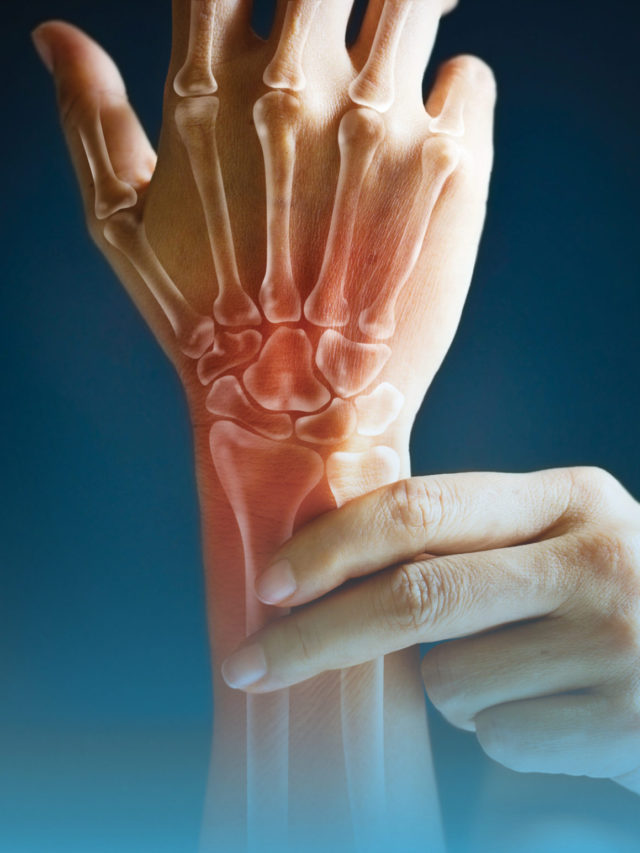
Myositis is a rare condition which causes inflammation of the muscles. Myositis is an autoimmune disease where the body’s immune system attacks its own cells, thinking of it as a foreign body.
Here in the case of myositis, the muscles will be damaged or injured. During the initial stages of the autoimmune condition, the affected person will have difficulty in locomotion.
The commonly affected muscles are the thighs, shoulders and hips. It can also affect other organs and parts of the body, that include the skin, lungs and heart.
In rare cases, it can affect the muscles that carry out functions like swallowing and breathing. The affected person can often miss balance and tend to fall or trip. They often feel very tired, even if they walk or stand.
They will also have difficulty walking and standing up suddenly. The common causes of myositis are injury, drug side effects and autoimmune conditions.
According to NCBI, inflammatory myopathies are a group of heterogeneous chronic systemic autoimmune diseases, and an annual case of the disease includes two to five cases per million. Additionally, it states that autoimmune diseases cause progressive muscle weakness and muscle inflammation.
Types of myositis
There are three types of myositis
-
- Polymyositis
-
- Dermatomyositis and
- Inclusion body myositis.
Polymyositis
Polymyositis (PM) is an immune-mediated syndrome which is mostly associated with systemic autoimmune diseases.
According to research published in NCBI titled “Inflammatory Myopathies”, polymyositis rarely affects people under the age of 20. The disease attains its peak in people aged between 30 and 60.
The proximal muscle weakness usually takes weeks to months to develop as a sub-acute myopathy.
Usually, the affected patients will present the symptoms of neck flexor and symmetric proximal upper and lower extremity weakness. These symptoms usually develop slowly, and the distal muscle involvement may be to a lesser degree.
Extraocular muscles are usually spared, and Dysphagia occurs in one-third of patients due to the involvement of the oropharyngeal and oesophageal muscles.
Polymyositis usually occurs due to T-cell-mediated injury. Some of the common symptoms of myositis include.
-
- Muscle weakness,
-
- Feeling very tired and muscle aches,
-
- Difficulty in sudden movements like standing and sitting,
-
- Depression and most often feeling unhappy and
-
- Difficulty swallowing and finding it hard to hold the head up.
Dermatomyositis
Dermatomyositis (DM) is a multi-system autoimmune disease which commonly affects children and adults. It is commonly characterised by the progression of symmetrical proximal muscle weakness and skin diseases.
Skin diseases include heliotrope rash, Gottron’s papules and macular erythema. The onset of skin diseases takes months to years and worsens with sun exposure.
According to NCBI, it states that the major difference between adult and juvenile dermatomyositis is the presence of subcutaneous calcinos, which affects the elbows and knees with or without ulceration in children.
Other symptoms include dysphagia, arthralgia, Raynaud’s phenomenon and pulmonary symptoms. According to research, it states that about 20-25% of the time, this type can be associated with underlying malignancy and connective tissue diseases.
Dermatomyositis is a humoral-mediated autoimmune disorder. The complementary attack leads to the destruction of capillaries in the muscles, which leads to the development of the disease.
The aetiology of the disease is still not known, and it has been suggested that genetically suspected individuals in response to certain environmental stimuli can increase the risk of myositis.
The symptoms of dermatomyositis are similar to that of polymyositis, and additionally, these symptoms are also reported.
-
- Red, purple or dark rash,
-
- Painful rashes and
-
- Hard lumps of tissues under the skin.
Inclusion body myositis (IBM)
Inclusion body myositis is commonly seen in the older population and is a subset of myopathy inflammatory. This type of myositis is common in men aged over the age of 50.
The onset of myositis takes months to years from the initial symptoms. The disease usually affects proximal and distal muscles. The common difficulties faced in inclusion body myositis are muscle atrophy, swallowing difficulty and frequent trips and falls.
According to NCBI, the inclusion of body myositis is commonly associated with other connective tissue diseases in about 15% of patients.
Inclusion body myositis is associated with the multifactorial disease with autoimmune and degenerative features.
The common symptoms of inclusion body myositis include
-
- Necrosis,
-
- Inflammation,
-
- Ragged red fibres and
- Angulated atrophic fibres.
Causes of myositis
Other causes of myositis are due to the presence of other inflammatory conditions like
-
- Lupus,
-
- Scleroderma.
The most common cause of myositis can be a viral infection. The virus can invade the muscle tissues directly, which can damage the muscle fibres. Common cold, flu and HIV are the common viruses that cause myositis. Bacteria, fungi and other organisms can also cause myositis.
Drugs can also cause myositis, which can be temporary. Drugs that cause inflammation include
-
- Alcohol,
-
- Cocaine,
-
- Statins,
-
- Colchicine,
-
- Alpha-interferon and
-
- Hydroxychloroquine
Myositis can also be caused due to an injury which can lead to pain, swelling and weakness. Vigorous and intense exercise can also cause myositis.
Case Study of Myositis
Samantha, a 35-year-old woman, is affected by myositis. According to researchers and doctors, this condition is common among young women and more common in females when compared to males.
According to the Indian Journal of Rheumatology, myositis affects 4-22 people for every one lakh.
According to research, there are evidences that support the cause of myositis increasing due to genetic reasons.
Additionally, doctors suggest that early diagnosis of the condition can reduce the severity of the condition.
Due to the advancement of the medical industry, there is a wide range of diagnosis and treatment options available to treat the condition effectively.
Diagnosis of myositis
When you visit your doctor, the doctor will first question you about the symptoms, and a physical examination will be done. If the doctor doubts the presence of myositis, they will suggest the following tests.
Blood test
Blood tests to determine the raised levels of the antibodies and enzymes in the blood.
Muscle biopsy
A small sample of the muscle skin or tissue will be examined for the cause of damage, swelling and symptoms.
Electromyography (EMG)
The doctor will insert a small needle-shaped electrode into the muscles. The diagnosis will be made with the response of the muscles to the electrical signals. The diagnosis will be made with an administration of local anaesthesia, and EMG can effectively identify the muscle weakness or damage.
MRI scans
MRI scans will help to produce images of the damaged muscles and capture the damages caused due to myositis.
Treatments of myositis
Exercise and physiotherapy
Exercise plays a major role in the treatment of all types of myositis. Exercises help reduce the reduces feeling of tiredness and swelling and restore muscle strength.
Exercise and physiotherapy can be effective for people affected by the inclusion of body myositis. However, inclusion body myositis cannot be treated with medication, and exercise is the only treatment.
However, before going forward with exercise and physiotherapy, consult your doctor. Sometimes, exercises can flare up myositis.
The physiotherapist will make a special exercise plan for people affected with myositis, which can mitigate muscle weakness.
Steroids

Steroids play a major role in the treatment of myositis. They give instant relief and reduce the swelling and pain caused due to inflammation and muscle damage.
These steroids can be taken as either tablets or injections which can be administered directly through veins. Usually, the steroid will start in a higher dosage, and then the dosage will be gradually reduced over the time of treatment.
A person taking steroids can experience certain symptoms like
-
- Weight gain,
-
- Diabetes.
Disease-modifying anti-rheumatic drugs
Disease-modifying anti-rheumatic drugs are given to people who experience swelling or muscle flare-ups.
These drugs help reduce swelling and pain by suppressing the immune system. Some of the medications used for the treatment are
-
- Azathioprine,
-
- Methotrexate,
-
- Mycophenolate and
-
- Cyclophosphamide.
These medications do not give relief immediately, but in the long run, they can effectively treat myositis. They also help to reduce the dose of steroids and ease the side effects caused due to steroids.
Immunoglobulin therapy
Immunoglobulin therapy is rarely used to stop the immune system from attacking the muscles.
Immunoglobulin is given directly as injections from the donated blood. The donated blood will contain healthy antibodies to stop the malfunctioning of the immune system.
Immunoglobulin treatment will require hospitalisation, and more than one treatment will be required.
Biologic therapies
Biologic therapy is used to treat diseases like myositis, rheumatoid arthritis and psoriatic arthritis.
Biologic therapy uses substances from living organisms, and they will be altered in the laboratory. They help to stimulate or suppress the immune system depending on the disease and treatment.
These biologic therapy also reduce the side effects caused due to the medications used. They also reduce swelling and used to treat people affected with severe myositis.
Some of the commonly used biologics are
-
- Cytokines,
-
- Vaccines and
- Antibodies.
Complications of myositis
Not every patient will respond to the treatment given. The affected people will find it difficult to carry out their daily activities, and their quality of life will be affected. However, mild exercise can help with the condition and reduce pain and swelling in the muscles.
Another complication of myositis is people may have difficulty in breathing and swallowing. For such patients, speech and language therapy will be recommended. These complications can affect a person’s communication skills.
In very rare cases, myositis can be associated with cancer, and additional tests and diagnostic methods may be recommended.
Conclusion
Myositis can be treated effectively with a combination of steroids and immunosuppressive therapy. Mild exercise can also reduce the severity of the symptoms.
Steroids are often needed for the treatment, which can increase the risk of other infections. However, it can be easily managed with the administration of antibiotics.
In some cases, myositis can be caused due to usage of certain medications, and they will be paused for some times. The pausing of medication should be done by the doctor, and do not stop any medication on your own.
If your symptoms are severe, consult your doctor immediately and do not try to treat anything at home as they can aggravate the condition.
FAQs
What causes myositis?
Myositis is caused due to the inflammation of the muscles, which can make movement difficult. The common causes of myositis are
- Injury,
- Autoimmune diseases and
- infection
Can myositis be cured?
Currently, there is no treatment for myositis. However, the disease can be managed effectively with a wide option of treatments. The treatment will mainly focus on reducing the inflammation and preventing weakness. There will be certain lifestyle changes recommended to support the treatment.
What is the life expectancy of myositis?
According to NCBI, 84% of patients survive up to 5 years after the diagnosis. Additionally, many people experience one period of acute illness in their lifetime, and some suffer from symptoms throughout their life.
What are the first signs of myositis?
The primary symptoms of myositis will be weakness, painful muscle aches and difficulty in carrying out daily activities like walking and standing. The affected person may experience frequent falls and trips.
DISCLAIMER: THIS BLOG/WEBSITE DOES NOT PROVIDE MEDICAL ADVICE
The Information including but not limited to text, graphics, images and other material contained on this blog are intended for education and awareness only. No material on this blog is intended to be a substitute for professional medical help including diagnosis or treatment. It is always advisable to consult medical professional before relying on the content. Neither the Author nor Star Health and Allied Insurance Co. Ltd accepts any responsibility for any potential risk to any visitor/reader.






